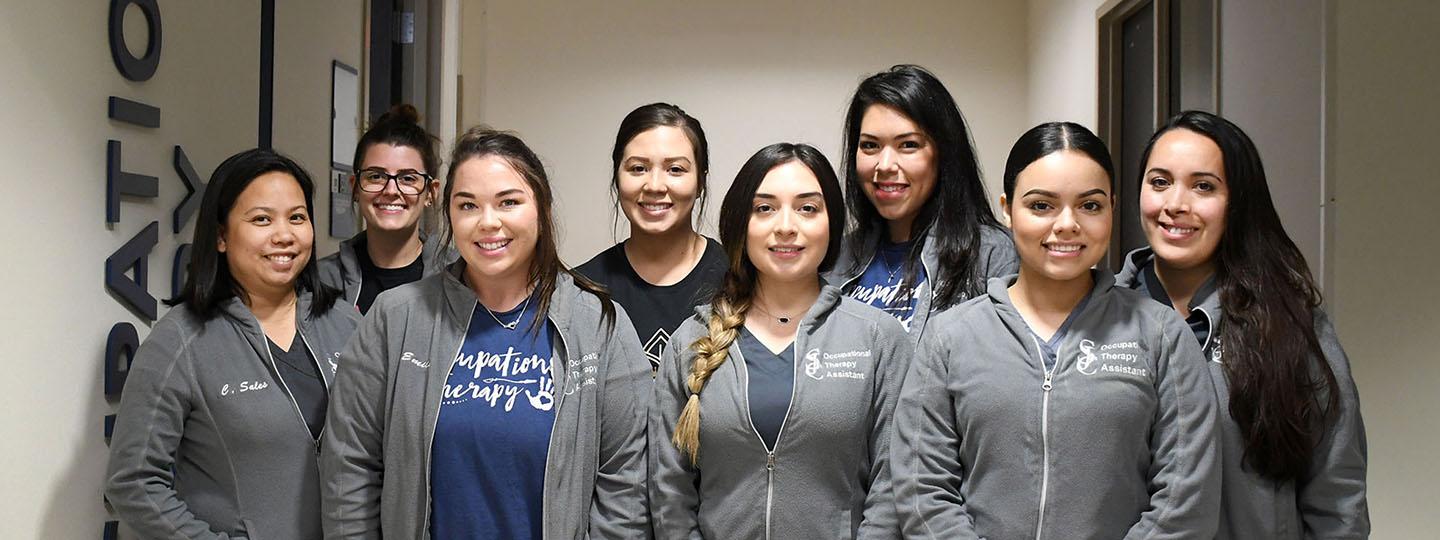Occupational therapy assistants stay on toes to help patients achieve independence

Dr. Kira Beal will always remember the scene.
A patient with tongue cancer had just come out of reconstructive surgery. Suddenly, her cell phone rang, and out of instinct, she answered. It was then she realized she couldn't speak.
"She was visibly upset. You could see the frustration, pain, and sheer helplessness on her face," Beal said. "No one had thought to silence her phone, and I was the first responder in that moment."
As an occupational therapist, Beal had to tune in to the range of emotions her patient was experiencing, calm her, and restore her sense of self-worth throughout recovery. The journey may be smooth or painstakingly slow, but for occupational therapists, helping patients achieve independence is worth the sweat.
"It's a rewarding career, knowing you're able to help individuals live their lives in all aspects as independently as possible," Beal said.
Beal is the program director of the new occupational therapy assistant program, launched in fall 2018 at San Jacinto College's South Campus. For many individuals who are struggling with physical, emotional, or other challenges, everyday tasks are impossible to do on their own. This is where the College's OTA program steps in.
The 22-month program, which leads to an Associate of Applied Science degree, will launch its first class of graduates into this fast-growing health care profession in spring 2020.
While they will have different workplaces — from hospitals, pediatric clinics, and skilled nursing facilities to schools and homes — these OTAs will have the same goal: helping patients learn, recover, and improve daily living skills, or the "occupations" of life.
Why choose the OTA program?
According to Beal, OTAs are creative, empathetic problem solvers who can help everyone from the newborn to the senior citizen thrive in his or her environment. Their work keeps them on their toes — figuratively and literally. While they share some similarities with physical therapists, OTAs focus not only on physical movement but also on problem solving, memory, organization, social skills, and more.
OTA student Ileana Villarreal, who will graduate from the program next spring, was drawn to the opportunity to improve people's quality of life. After completing the program, she plans to pursue a traveling OTA position or work in an inpatient/outpatient setting for orthopedic patients.
"If you're looking for a career that gives you opportunities to help others, expand your creativity, and provide you with a wide variety of health care settings, the occupational therapy assistant program may be perfect for you," Villarreal said.
Fellow OTA student Emily Maniscalco originally planned to become a nurse. After finishing a medical assisting program, she worked full time at a rehabilitation hospital for stroke patients. While there, she watched occupational therapists work with patients in the rehab gym, and her career took a 180.
Although Maniscalco will be the first to admit the OTA program's challenges, every challenge now helps her become the best OTA possible for her future patients. Her initial anxiety about a mental health clinical rotation has changed to confidence as she applies her learning, helping these patients with occupations meaningful to them.
"The quote that always makes me push myself to the best of my abilities is 'Nothing worth having comes easy,'" Maniscalco said. "I would give that advice to someone who has a passion for helping others and wants to pursue occupational therapy. The program may seem difficult at times, but it is shaping us to be the best we can be to help our clients return to their optimal level."
In addition to having a fulfilling career, OTAs are also in high demand. According to the U.S. Bureau of Labor and Statistics, employment of OTAs will increase more than 40% from 2017-24.
In 2017, U.S. News Rankings listed OTAs as No. 1 in best health care support jobs and No. 12 in the 100 best jobs. In the same year, texaswages.com predicted OTAs to earn a median annual salary of $66,588 in the Gulf Coast area.
About the program
The OTA program currently has eight students and anticipates reaching a maximum classroom capacity of 24 in the next five years. The next application period will be Jan. 13 - April 3 for fall 2020 enrollment.
Pending program accreditation in spring 2020, the first OTA graduates will sit for the National Board for Certification in Occupational Therapy exam, then apply for their license through the Texas Board of Occupational Therapy Examiners. Afterward, they will be eligible to work as OTAs or may continue their education to become occupational therapists.
Because of the progression and sequence of the classes and embedded clinical experiences, the OTA program is offered full time only.
To learn more about the OTA program and get an application packet, visit sanjac.edu/programs/areas-of-study/health/ota/.
